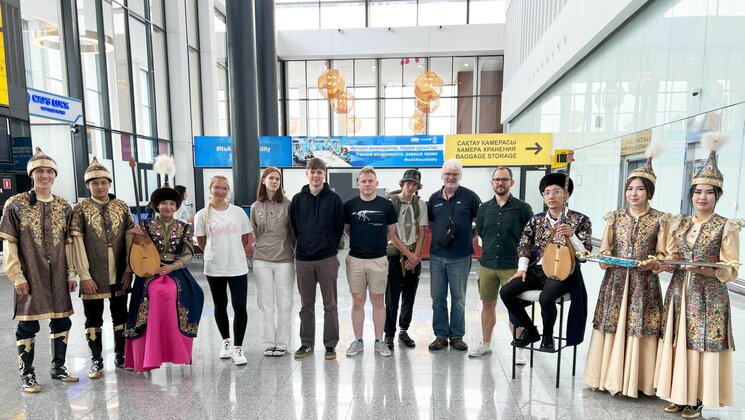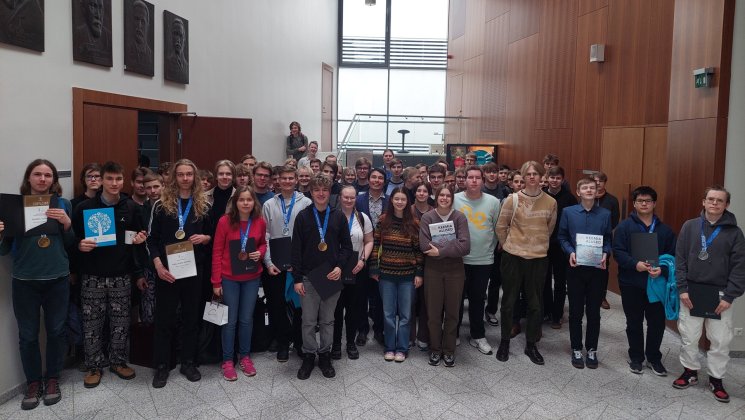The 30th Baltic Chemistry Olympiad took place in Estonia

This year, Estonia hosted the traditional Baltic Chemistry Olympiad. For the anniversary, Estonia made several changes in the organization of the Olympiad. For the first time, it was decided to conduct the problem-solving in the Moodle environment. The tasks were also shared on Discord channel, which includes over 6000 chemistry enthusiasts from around the world, who could participate in solving the Olympiad tasks.
For the anniversary Olympiad, a collection of tasks from previous Baltic Chemistry Olympiads was prepared, containing over 180 theoretical tasks, which is valuable study material for both students and teachers. Employees of the University of Tartu have compiled tasks on topics such as the principles of operation of energy sources like lithium-ion and lead-acid batteries, fuel cells, internal combustion engines, and other energy sources.
This year, the Baltic Chemistry Olympiad also had a guest team from Ukraine, whose invitation idea arose during discussions with Ukrainian mentors. Ukrainians appreciated the opportunity to compete, solve high-quality experimental and theoretical tasks, and were grateful for the hospitality.
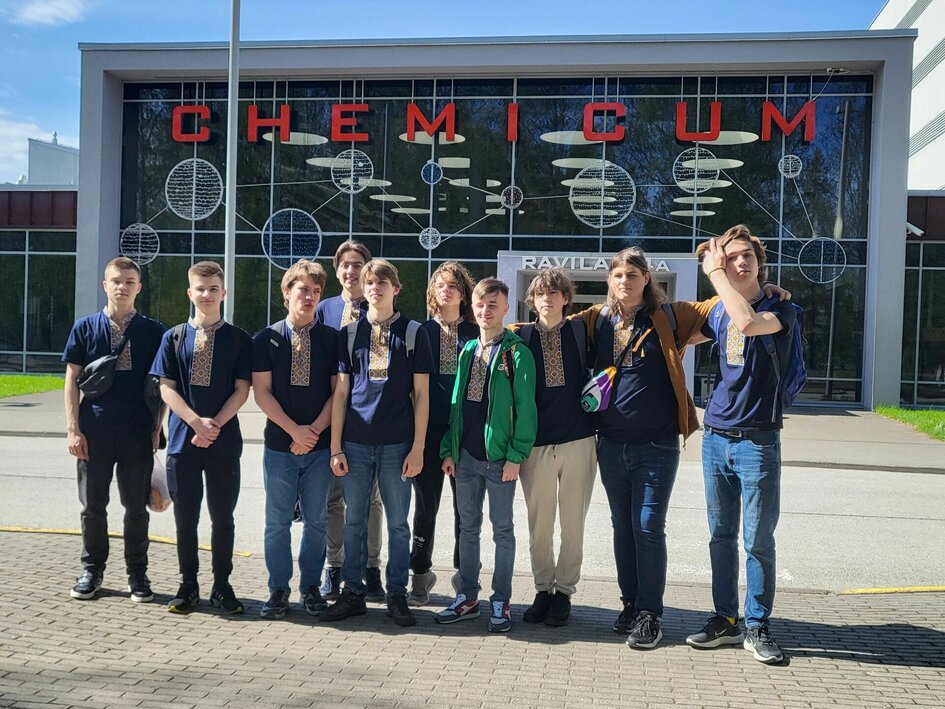
The Olympiad included tasks from both thermodynamics and kinetics.
The Chemistry Olympiad consists of six tasks: each country's scientists propose two theoretical tasks, which are then reviewed by a joint jury from three countries. The difficulty and format of the tasks are comparable to those of international Olympiads, but their topics are more traditional.
This year's tasks were related to kinetics, thermodynamics, organic synthesis, and analytical chemistry. The tasks in inorganic chemistry differed from the usual, requiring participants to have knowledge of cerium compounds and toxic gases. Scientists from the University of Tartu's Chemistry Institute had prepared practical round tasks, including titration with four changing colors and electroplating of copper with secret additives.
The winners were determined after a three-day competition.
On the first day of the three-day Olympiad, on May 4th, the opening ceremony took place, followed by four hours of laboratory experiments. On Sunday, May
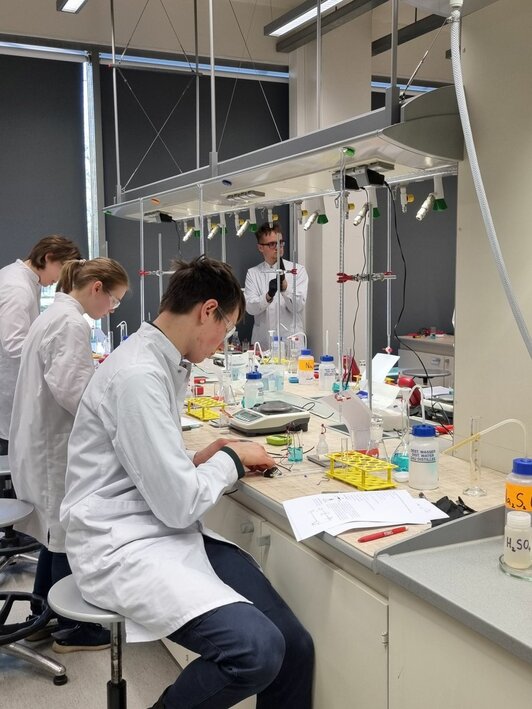
5th, there was a five-hour theoretical round. Later, students had the opportunity to test themselves in an excursion game, where they had to visit museums in Tartu and answer questions related to chemistry. On May 6th, the closing ceremony was held and the winners were awarded.
The winners who will go to the International Chemistry Olympiad in Saudi Arabia were announced. The top three were students from Lithuania: first place went to Justas Miliauskas, second place to Pijus Tamošiūnas, and third place to Augustas Rinkevičius. The awards were presented by Riin Tamm, Head of the Department of Youth and Gifted Policy at the Ministry of Education and Research, and Meelis Leidt, Deputy Mayor of Tartu, who also gave a speech.
The Baltic Chemistry Olympiad was organized by the University of Tartu's Institutes of Chemistry, Physics, and Science. The Olympiad was supported by the Ministry of Education and Research, the City of Tartu, Ontic Minerals, and The J. Molner Company.
Estonian representatives were determined differently this time.
Instead of inviting about 15 students based on the results of the spring final round of the Estonian Chemistry Olympiad of the same year, for the past two years, there have been several rounds in the selection competition. The first round took place in the Moodle environment and included participants from the final round of the Chemistry Olympiad, participants in open competitions, and other chemistry enthusiasts. In the second round, 40 selected students had to solve theoretical and practical tasks. From among them, 15 competitors were selected, who had to solve a homework assignment, based on which 8 Estonian representatives were selected for the Baltic Chemistry Olympiad. The new format has increased competitiveness, and better results in the Baltic Chemistry Olympiad show that the new system works well.
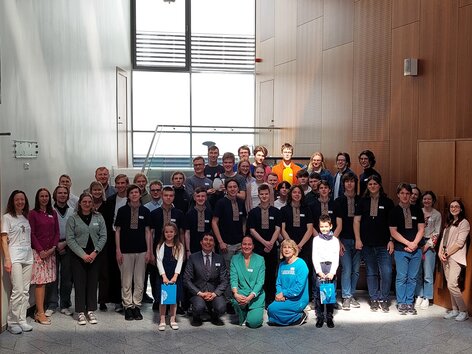
The Estonian team:
- Kaarel Toomet from Nõo Reaalgümnaasium (10th grade, teacher Aivar Vinne),
- Sander Kaal from Gustav Adolfi Gümnaasium (12th grade, teacher Martin Saar),
- Ardi Raag and Lisette-Liis Loorits (12th grade, teacher Martin Saar),
- Karlis Suvi (11th grade, teacher Andrus Kangro) from Tallinna Reaalkool, and Karl Johann Külv (graduate of Tallinna Reaalkool, teacher Andrus Kangro),
- Ivan Vnukov from Tallinna Tõnismäe Reaalkool (11th grade, teacher Lidija Rõbnikova),
- Mihkel Tali from Hugo Treffneri Gümnaasium (11th grade, teachers Eha Paabo, Kerli Tali),
- mentors Kristi Koitla and Andreas Päkk.


